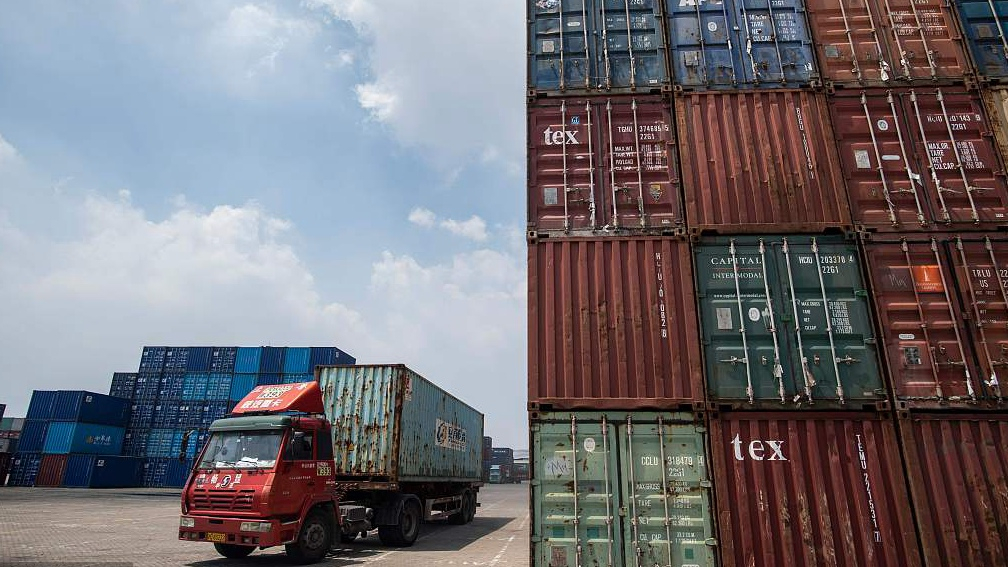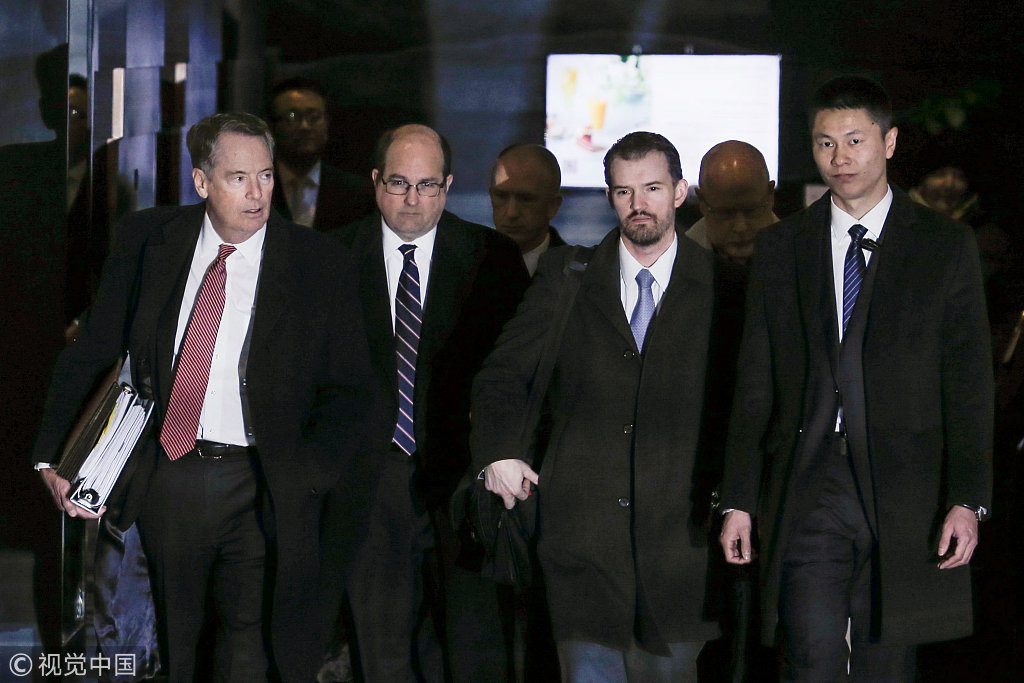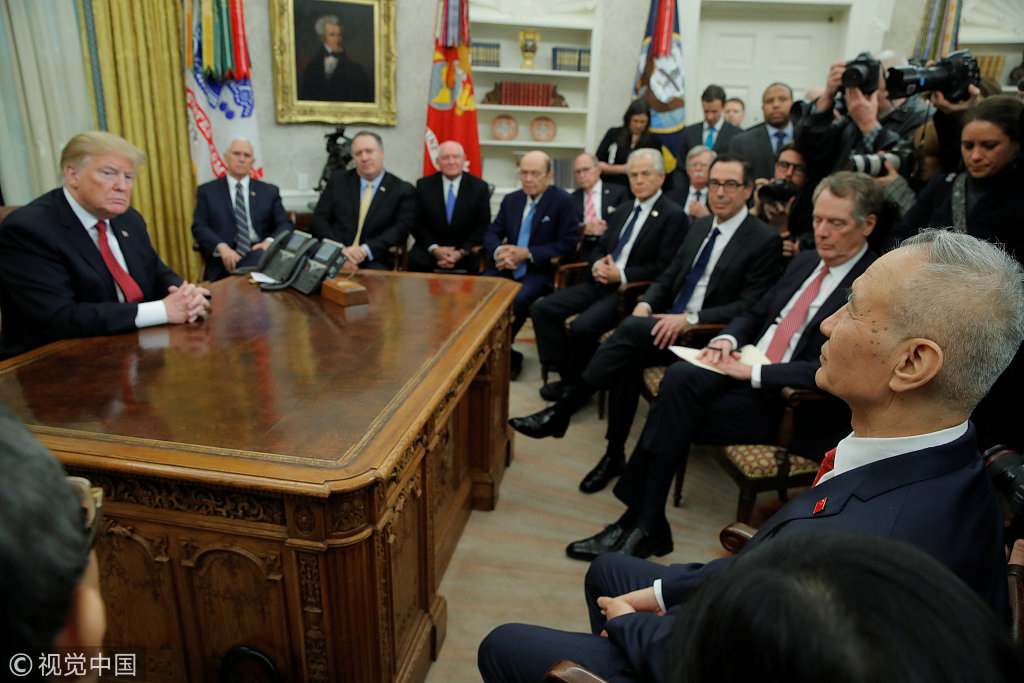
Opinion
10:10, 02-Apr-2019
We need to look at trade talks with optimism and caution
Updated
17:38, 02-Apr-2019
Liu Dian

Editor's note: Liu Dian is an associate research fellow at the Chongyang Institute for Financial Studies, Renmin University of China, and a researcher at the Charhar Institute. The article reflects the author's opinion, and not necessarily the views of CGTN.
China and the U.S. are continuing their trade talks. Officials from both the Chinese and the U.S. sides are cautiously optimistic about the outcome. On March 28, when the talks were held between China and U.S. negotiation teams in Beijing, the spokesman for the Chinese Ministry of Commerce Gao Feng said at a regular press conference, "The two sides have made some progress, but there is still a lot of work to be done."
The U.S. National Economic Council Director Larry Kudlow also said in Washington that negotiations could continue for months.
Chinese Vice Premier Liu He will go to the United States in early April for the ninth round of the China-U.S. high-level economic and trade talks. It remains uncertain what the outcome of the negotiations will be and how the trade agreement will be implemented.
Consensus drives trade talks forward
Since the U.S. signed a memorandum “targeting China's economic aggression” March last year and started the China-U.S. trade war, the U.S. has kept pressuring China to make changes in its economic policies. China, however, has consistently resisted the pressure.
Last December, the heads of state of China and the United States reached a consensus at a meeting in Argentina. China-U.S. economic and trade tensions started to ease. This also boosted the confidence of the global market to a certain extent. The stock market index of many countries showed the highest increase in several months. The outside world's expectation of an agreement between China and the United States has also grown.
Since this January, high-level economic and trade talks between the two countries have been held many times. Under the guidance of the consensus of the two heads of state, frank and constructive talks have been held on issues of mutual concern such as trade balance, technology transfer and intellectual property protection.

U.S. trade representative Robert Lighthizer (L) leaves a hotel in Beijing for talks with Chinese officials, China, February 14, 2019. /VCG Photo
U.S. trade representative Robert Lighthizer (L) leaves a hotel in Beijing for talks with Chinese officials, China, February 14, 2019. /VCG Photo
The two sides have reached consensus on strengthening cooperation, adopting effective measures to promote balanced development of trade and establishing an effective two-way implementation mechanism, all of which are positive signals.
At the beginning of the eighth round of talks, the spokesman for the Chinese Ministry of Commerce once again mentioned that "cooperation is the best choice for China and the United States." It can be said that both sides are seeking the greatest common denominator with a positive attitude.
Cooperation and competition
As two big countries with different characteristics and in light of their respective strategic plans and development expectations, it's natural for China and the United States to have differences in economic and trade fields and competition in various development areas. It is also inevitable for both countries to seek cooperation despite their differences.
With globalization roaring ahead, the industrial division of labor between China and the United States has generated a huge surplus in goods trade on China's side.
However, due to the dominant position of the United States in the global value chain, a situation has emerged where China has the nominal trade surplus but the actual profit goes to the United States.
Even so, the United States still hopes that China will make further concessions on the trade surplus of goods, repeatedly using tariffs and other measures to force China to increase its imports from the U.S. so as to achieve trade balance.
However, China stands firm in defending its core interests and adopts countermeasures to protect its long-term interests.
Another important reason for China-U.S. trade frictions is disagreements on technology transfer and intellectual property protection. Both sides are leading the world in terms of science and technology development. The fierce competition for growth opportunities of high-tech industries has added to the scope of trade friction.
The trade war that has lasted for nearly a year now has caused losses to both China and the United States. Resolving disputes through cooperation and consultation is not only a consensus between the two countries, but also a solution beneficial for the world economy and trade.
China and the United States are trying to find solutions to trade frictions and seek cooperation in competition. The heads of state of both countries have reached a consensus in principle, leading the trade talks between the two countries towards ending the trade war.
The negative idea of reducing China's exports is replaced with the positive idea of expanding imports by China to ease trade imbalance. China will safeguard its rights to pursue industrial upgrading and self-development, and actively seek mutually beneficial development paths.

U.S. President Donald Trump meets with China's Vice Premier Liu He (R) in the Oval Office of the White House in Washington, U.S., January 31, 2019. /VCG Photo
U.S. President Donald Trump meets with China's Vice Premier Liu He (R) in the Oval Office of the White House in Washington, U.S., January 31, 2019. /VCG Photo
Long-term efforts
Both China and the United States have shown a positive attitude towards the overall progress of the negotiations. The top priority is still to increase trust and dispel doubts. Given the current situation, positive results between the two sides may still take some time to come.
Meanwhile, it's unwise to exaggerate the difficulty of overcoming the remaining differences. With the negotiations getting more substantive and concrete, the two sides will inadvertently have disagreements in some areas, or have not yet reached a consensus on the implementation mechanism of the agreement and the way to cancel the tariffs imposed.
No matter what the outcome of the next round of talks, the two major powers will have a deeper understanding about future competition and cooperation. Even after an agreement is reached through trade talks, China and the United States need to move forward together in the implementation of the agreement and make long-term efforts towards the proper settlement of trade disputes.
(If you want to contribute and have specific expertise, please contact us opinions@cgtn.com.)

SITEMAP
Copyright © 2018 CGTN. Beijing ICP prepared NO.16065310-3
Copyright © 2018 CGTN. Beijing ICP prepared NO.16065310-3